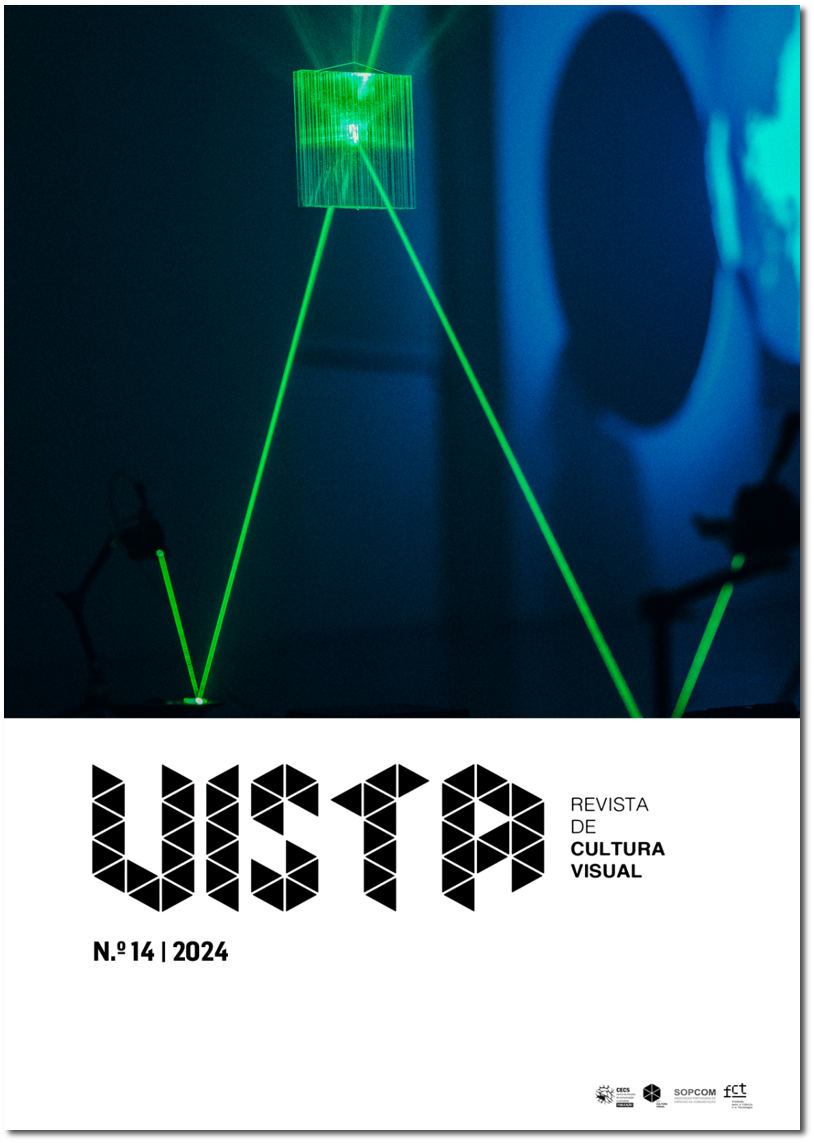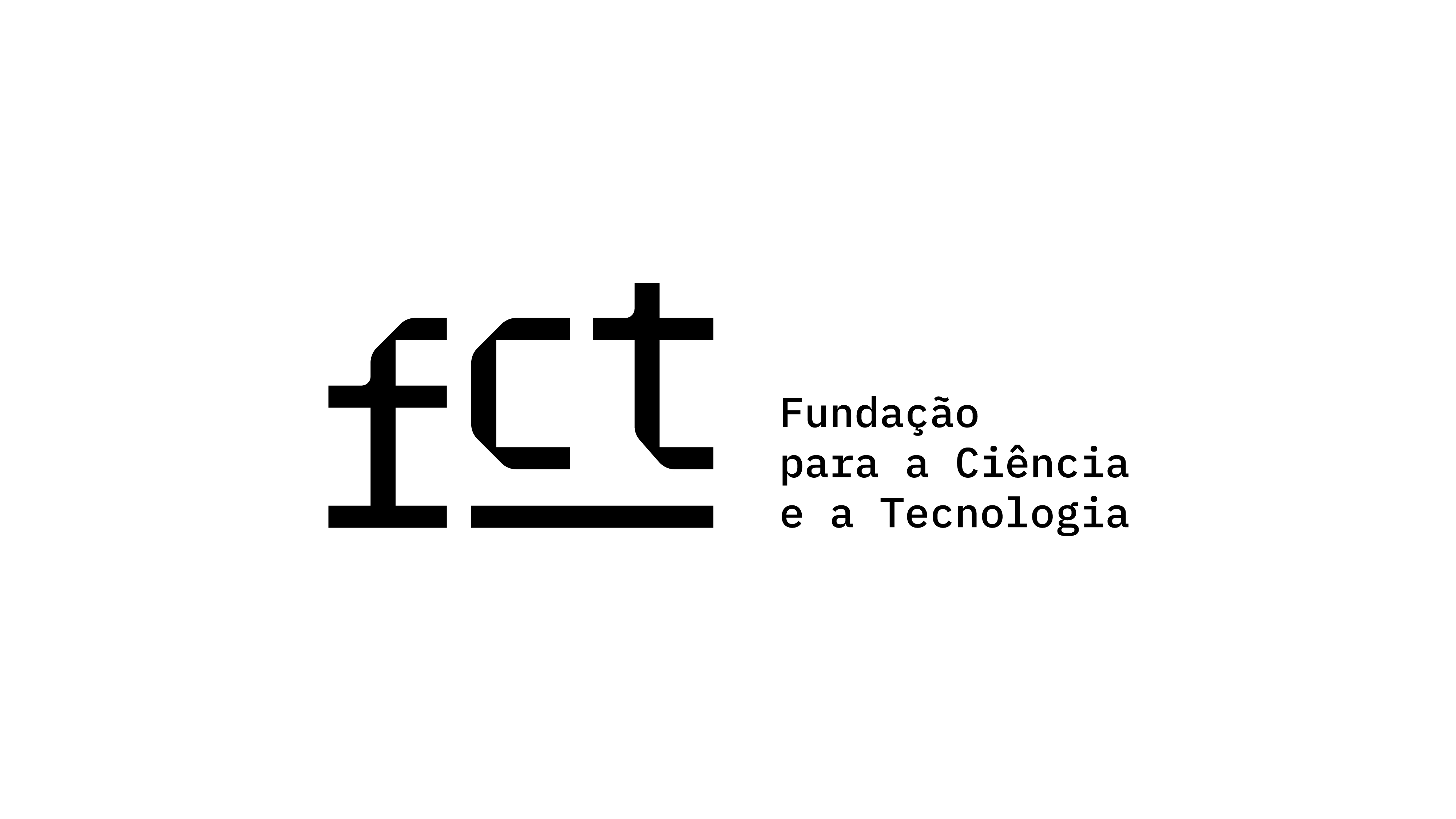Repensar a Media Art na Era da Computação Pervasiva
DOI:
https://doi.org/10.21814/vista.5903Palavras-chave:
media art, estética computacional, novos média, arte contemporânea, história da arteResumo
À medida que a sua estética, os seus métodos e o seu foco conceptual se fundiram em diversos aspetos com os da arte contemporânea convencional, os limites da media art tornaram-se menos claros do que quando a utilização da tecnologia na arte era ainda pouco frequente. Embora o termo "media art" possa ser útil na designação de uma esfera de atuação ou discurso específica, o seu atual significado sofreu uma alteração decorrente da evolução das circunstâncias inerentes à utilização da tecnologia na criação de arte. Devido à sua íntima associação, desde os seus primórdios enquanto campo, com os "novos média", como o computador, a internet, os meios de comunicação à base de ecrãs e sistemas interativos, este termo requer agora uma reavaliação face ao panorama de computação pervasiva com o qual estamos familiarizados na condição pós-digital. Sendo que muitas destas formas definidoras dos novos média deixaram de ser novidade e foram integradas em práticas artísticas convencionais, a media art poderá não se definir tanto pela sua interação com meios de comunicação específicos, mas sim pelos aspetos estilísticos e referenciais provenientes da sua linhagem histórica. Este trabalho estabelece comparações entre os primeiros debates acerca da media art e desenvolvimentos recentes na área, com o propósito de compreender se, e de que forma, a media art continua a ser relevante enquanto termo referente a práticas artísticas contemporâneas que utilizam a tecnologia. Considerando-a de tal perspetiva, esta investigação propõe repensar que aspetos poderão ser considerados inerentes a esta área e questiona a forma como esta reestruturação poderá beneficiar os profissionais e teóricos que abordam este tópico.
Downloads
Referências
Andersen, C. U., & Pold, S. B. (2018). The metainterface: The art of platforms, cities, and clouds. The MIT Press.
Bolter, J. D., & Gromala, D. (2003). Windows and mirrors: Interaction design, digital art, and the myth of transparency. The MIT Press.
Bosma, J. (2011). Nettitudes: Let’s talk net art. NAi Publishers.
Broeckmann, A. (2016). Machine art in the twentieth century. The MIT Press.
Broeckmann, A. (2019). The machine as artist as myth. Arts, 8(1), 1–10. https://doi.org/10.3390/arts8010025
Carvalhais, M. (2022). Art and computation. V2_Publishing.
Carvalhais, M. (2023). Designing (with) computational objects: From metamedia to metaenvironments. JOELHO - Journal of Architectural Culture, (14), 129–140. https://doi.org/10.14195/1647-8681_14_7
Carvalhais, M., & Cardoso, P. (2023). Computational media and the paradox of permanence. Journal of Digital Media and Interaction, 6(15), 31–42. https://doi.org/10.34624/jdmi.v6i15.32096
Carvalhais, M., & Cayolla Ribeiro, D. (2023). Aesthetics after the ontological turn: An ecological approach to artificial creativity. Critical Humanities, 2(1), 1–21. https://doi.org/10.33470/2836-3140.1031
Cramer, F. (2013). What is 'post-digital'? A Peer-Reviewed Journal About, 3(1), 11–24.
Csuri, C. (1976). Statistics as an interactive art object. In R. Leavitt (Ed.), Artist and computer (pp. 85–87). Creative Computing Press.
Galloway, A. R. (2021). Uncomputable: Play and politics in the long digital age. Verso.
Gitelman, L. (2008). Always already new: Media, history, and the data of culture. The MIT Press.
Han, B.-C. (2024). The crisis of narration. Polity Press.
Huhtamo, E., & Parikka, J. (Eds.). (2011). Media archaeology: Approaches, applications, and implications. University of California Press.
Hui, Y. (2023). ChatGPT, or the eschatology of machines. E-flux, (137), 1–8.
Jenkins, H. (2006). Convergence culture: Where old and new media collide. New York University Press.
Kitchin, R., & Dodge, M. (2011). Code/space: Software and everyday life. The MIT Press.
Kittler, F. A. (2017, November 9). The finiteness of algorithms. Transmediale. https://archive.transmediale.de/content/the-finiteness-of-algorithms
Kwastek, K. (2013). Aesthetics of interaction in digital art. The MIT Press
Lee, R. (2022). Art involving computers vs. computational art. In M. Carvalhais & L. P. Nunes (Eds.), Espaço/programa (pp. 41–47). FBAC.
Lee, R. (2024). Algorithm, image, art. Atropos Press.
Ludovico, A. (2023). Tactical publishing: Using senses, software, and archives in the twenty-first century. The MIT Press.
Manovich, L. (2001). The language of new media. The MIT Press.
Manovich, L. (2013). Software takes command: Extending the language of new media. Bloomsbury Academic.
McAndrew, C. (2024). The Art Basel & UBS market report 2024. Art Basel; UBS.
McLuhan, M. (1964). Understanding media: The extensions of man. Routledge.
Morton, T. (2013a). Hyperobjects: Philosophy and ecology after the end of the world. University of Minnesota Press.
Morton, T. (2013b). Realist magic: Objects, ontology, causality. Open Humanities Press.
Noë, A. (2015). Strange tools: Art and human nature. Hill and Wang.
Paglen, T. (2024). Society of the Psyop, part 1: UFOs and the future of media. E-flux, (147), 1–8.
Penny, S. (2017). Making sense: Cognition, computing, art, and embodiment. The MIT Press.
Ribas, L. (2024). Objeto desafiante. In M. Carvalhais & L. Ribas (Eds.), Arte, digital, academia, museu zer0 (pp. 21–36). Museu Zer0 & i2ADS.
Rivero-Moreno, L. D. (2024). A arte dos novos meios, ou sobre definir o indefinível. In M. Carvalhais & L. Ribas (Eds.), Arte, digital, academia, museu zer0 (pp. 133–150). Museu Zer0 & i2ADS.
Wagner, S.-C. (2017). Poietry: Challenging solitude and the improbability of communication. de Gruyter.
Wardrip-Fruin, N., & Montfort, N. (Eds.). (2003). The new media reader. The MIT Press.
Zielinski, S. (2006). Deep time of the media: Toward an archaeology of hearing and seeing by technical means. The MIT Press.
Zylinska, J. (2020). AI art: Machine visions and warped dreams. Open Humanities Press.
Downloads
Publicado
Como Citar
Edição
Secção
Licença
Direitos de Autor (c) 2024 Rosemary Lee, Miguel Carvalhais

Este trabalho encontra-se publicado com a Licença Internacional Creative Commons Atribuição 4.0.
Os autores são titulares dos direitos de autor, concedendo à revista o direito de primeira publicação. O trabalho é licenciado com uma Licença Creative Commons - Atribuição 4.0 Internacional.












